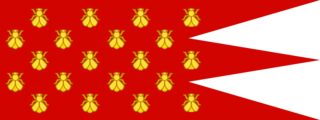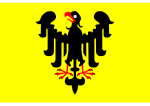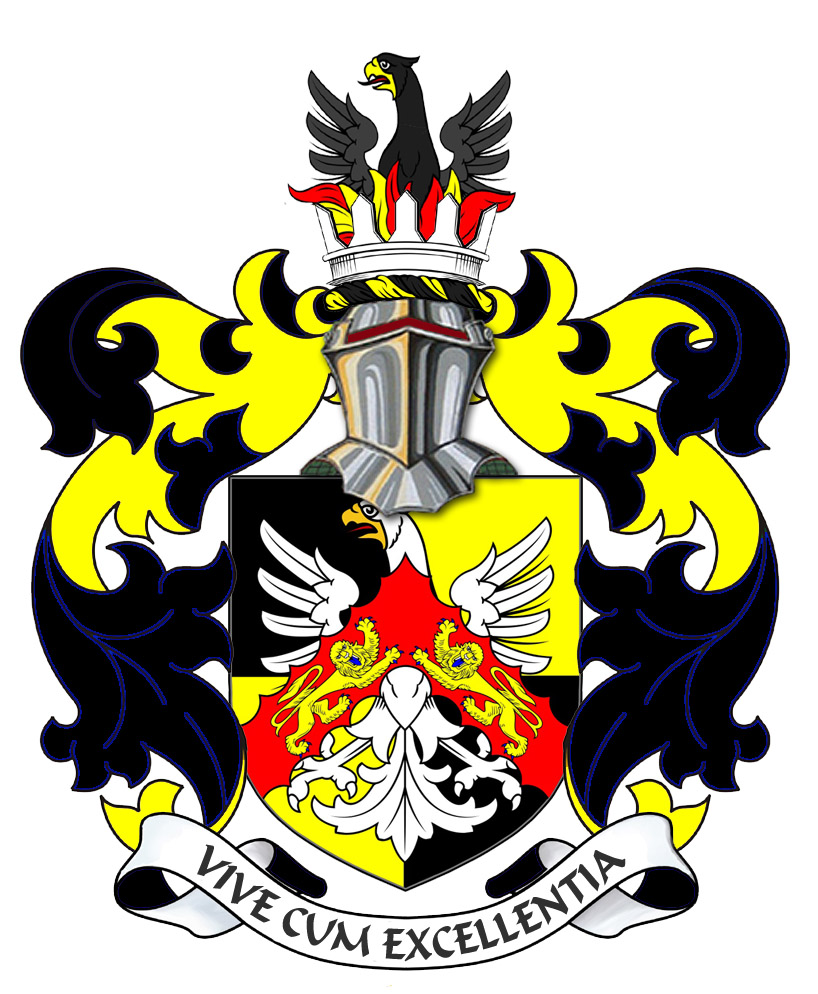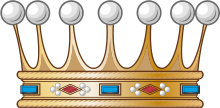



Private Feudal Court of The High Lord of Blondel -The Chief Pleas of the Seignorial court of Fief Thomas Blondel were held annually at the mounting block or steps (perron) of the Church of St. Pierre-du-Bois. Today, St Peter's Church, known officially as Saint Pierre du Bois is a parish in Guernsey. https://www.stpeterschurchguernsey.co.uk/4/homewelcomeour-building It is the centre for the Guernsey Western Parishes which includes Torteval, St Saviour's and the Forest. The old Guernesiais nickname for people from Saint Pierre was etcherbaots which means The Beetles. Wikipedia The Feudal Courts have existed for over 800 years. Even the title to the Fief Blondel shows the court and jurats transferring the Fief from Janette Blondel to Thomas de la Court in 1440.
As Fief Blondel is one of the Last Feudal Private Fiefs in the World, The Lord and Officers may conduct court at anytime and anywhere in the world in ceremony. The Fief of Thomas Blondel in the parishes of Torteval and St. Peter in the Wood is an authentic Norman Viking Frankish title. The Seignuers (Free Lords) of Blondel existed before formal Baron titles were created. Fief Blondel is part of the former large Fief of Canelly, once held by William de Chesney (1284) and before him by the Le Canellys until the separation of Guernsey from French Normandy in 1204. Feudal Courts still meet to this day as reported by the BBC: http://www.bbc.com/news/world-europe-guernsey-27962557 Commissioner Mentz, Seigneur of Fief Blondel et Eperons at the Steps of the Fief Court at the Church of St. Pierre Du Bois or St. Peter in the Wood Seigneur of Fief Blondel, Commissioner Mentz meets lords spiritual and temporal and Governor of the Islands Seigneur of Fief Blondel participates in Ancient Feudal Procession for Chief Pleas
Officers of a Fief - Here is the Example of The Fief de Blanchelande below: The court of Fief de Blanchelande consists of senechal (or steward), four vavasseurs (jurats or vassals) and officers who include the greffier and his deputy (court clerks), a prevot (sheriff), a sergent (sergeant to serve summonses) and a grenetier (grain store-keeper) The court always met at least three times a year at Chief Pleas after Michaelmas, Christmas and Easter, although since the German Occupation this has reduced to the one Chief Pleas after Michaelmas. However, this sitting has continued the long tradition of having a court lunch immediately afterwards, at La Barbarie Hotel. http://www.labarbariehotel.com/PDF/History.pdf Guernsey Feudal Lords and their FiefsThe administration of a feudal manor has been regarded from two points; (1) the old view, which represented every- thing feudal as a grinding tyranny, whether from the king as supreme in the State, down to the lord of the manor ; (2) the modern view, which sees the power both of king or baron great, but not absolute. The king, the chief of the State, but regarded by his barons rather as chief among equals than as a superior. As the barons of Aragon said to their king — 4; We, each of whom is as good as you, all together better than you."* So the feudal baron ruled his estate as chief among his principal tenants, who formed his court and administered justice under his representative, the seneschal. This system is clearly shown in the records of manor courts in England, and by the old " franchises " of our Guernsey Fief du Comte, the earliest copy of which dates from 1406. Here we find the seneschal, or president of the Manor Court, and the greffier, or clerk, appointed by the Lord of the Manor. The eight vavassors, or judges of the court, were the seigneurs of the eight principal frank-fiefs of the manor, who held their land by suit of court. By the sixteenth century only three of these frank-fiefs retained hereditary seigneurs, namely those of Du Groignet, Du Pignon, and De Carteret, the two first held by the Le Marchants, and the latter by a Blondel. These seigneurs served as vavassors either in person or by deputy chosen by themselves, subject to the approval of the Seigneur du Comte. The vavassors of the other five franc- fiefs, De Longues, Des Reveaux, Du Videclin, Des Grantes, and De La Court, were chosen by the lord of the manor, and presented by him to take oath before the Manor Court. They bore the title of seigneurs of the franc-fief they represented whilst acting as vavassors. The next important officer, the prevot or grangier of the manor, whose duties in some measure corresponded with those of the prevot or sheriff of the Royal Court, was curiously chosen by the tenants of the thirty-two vellein bouvees of the manor. Two of these bouvees in turn choosing the prevot for the year. That this rather important officer, who also acted as receiver of the revenue of the manor, should have been elected yearly by the vellein tenants is a very interesting fact, one certainly quite contrary to the generally conceived notions on feudalism. The same custom prevailed in most of our Guernsey manors, with the exception of that of La Rosiere, belonging to the Seigneur d'Anneville, of which the " prevote " was hereditary in the family of Prey, who were considerable landowners near " Les Grandes Capelles." There were also seven bordiers of Fief du Comte who held their lands called " bordages " by service of acting as police officers to the court. They had to attend its sittings, execute its orders, help the prevot in arresting tenants of the manor, and taking them to prison ; also in early times they had to assist him in receiving from the hands of the king's officers, felons, tenants of the manor condemned to execution by the Royal Court, and hang them on the manorial gallows, otherwise the king and not the lord of the manor, got their escheats. Citation The Seigneurs and Dames of the Ancient Fiefs have been asked in 2022 to join the Court of Chief Pleas that is run by the Crown's Government. All of the lords temporal and spiritual show up to the Ancient Royal Court to proclaim attendance. The Courts have existed since Guernsey was part of France over 800 years ago where the Courts were held at St. Michael in 1204. These may be the oldest courts in the world still in operation. To this day, the Royal Courts invite Seigneurs and Dames (Free Tenants) of the ancient Guernsey fiefs to pay suit to the court. The Chiefs or Lord Seigneurs have been in existance in Guernsey for more than 800 years. Year 1179 provides us with the key to many puzzles. It proves the existence of a Royal Court in Guernsey at that date, a curia regis presided over by a vicomte. The Vicomte's Court was a feudal court in which the Seigneurs or tenants-in-chief of the Fiefs, the notables of the district, sat as assessors under the presidency of the vicomte as they sat in the courts of the Anglo-Norman Sheriffs of the period. The oldest Courts of Guernsey can be traced back to the 9th century. The principal court is the Royal Court and exercises both civil and criminal jurisdiction. Additional courts, such as the Magistrate's Court, which deals with minor criminal matters, and the Court of Appeal, which hears appeals from the Royal Court, have been added to the Island's legal system over the years. A projet de loi is the equivalent of a UK bill or a French projet de loi, and a law is the equivalent of a UK act of parliament or a French loi. A draft law passed by the States can have no legal effect until formally approved by Her Majesty in Council and promulgated by means of an order in council.[50] Laws are given the Royal Sanction at regular meetings of the Privy Council in London, after which they are returned to the islands for formal registration at the Royal Court. The States also make delegated legislation known as Ordinances (Ordonnances) and Orders (ordres) which do not require the Royal Assent. https://members.societe-jersiaise.org/whitsco/guide5.htm
Fief Blondel is a Moiety of the Fief au Cannely The Assize Rolls of 1309 and 1320, and a deed at Warwick Castle throw light on this last entry, as they show that Drouet de St Martin had married Guillemote, and Thomas de Vic, Lucie, daughters and co-heiresses of Sir Henry Le Canelly, Knight, Seigneur of Le Canelly, an important Guernsey manor which stretched over part of the parishes of Torteval, St Peter-in-the-Wood and St Saviour. Henry de St Martin The de St Martin brothers declared that Henry de St Martin and Avice de Vic held the inheritance of 'Le Kenele' between them, and Henry and Avice declared that, with the exception of the 'aid' which they did not claim, their ancestors had enjoyed these rights from time immemorial. Through some subsequent redivision of lands between the brothers, the de St Martin's share of Le Canelly went to Sire Symon de St Martin, Rector of St Saviour, Guernsey, sometime before the Assizes of 1320. St Martin and de la Court families - Jerripedia (theislandwiki.org) Thus, "Suit of Court" was part of the moiety of Le Kenele or Fief au Cannely | ||||||||
Kingdom of West Francia Lord Paramount Feudal Barons The Seigneur Charter of Liberties Viking Kingdom Extended Continental Shelf Fief Worship Fiefs of the Islands Fief de l'Eperon Order of the Iron Crown Blondel Privy Seal Fief DuQuemin Bouvée Phlipot Pain Bouvée Torquetil Bouvée Bourgeon Channel Island History Feif Court Styles and Dignities Fief Blondel Islands Court of Chief Pleas Seigneurs and Dames Travel Research Order of the Genet Order of the Genet Order of the Star Est. 1022 Order of the White Falcon Territorial Waters Order of Celestines Knights of theThistle of Bourbon A Funny Think Happened On the Way to the Fief Arms Motto Flower Chancellor Hereditements Guernsey Bailiwick of Guernsey - Crown Dependency Papal Bull Norse Normandy Fief Rights Blondel and King Richard Press Carnival Store Portelet Beach Roquaine Bay Neustrasia Columbier Dovecote Fief Blondel Merchandise Fief Blondel Beaches Islands Foreshore Events Fiefs For Sale Sold Fief Coin Viscounts de Contentin Fief Blondel Map Feudal Guernsey Titles The Feudal System Flag & Arms Fief Videos Guernsey Castle Advowson Site Map Disclaimer Livres de perchage Lord Baron Longford Dictionary
Feudal Lord of the Fief Blondel of the Nordic Channel Islands Guernsey Est.
1179
Feudalherr - Fief Blondel von der Nordischen Insel Guernsey Est. 1179
New York Gazette - Magazine of Wall Street -
George Mentz -
George Mentz - Aspen Commission
Counselor George Mentz Esq. - Seigneur Feif BlondelBaron Annaly Baron Moyashel Grants to Delvin About Longford Styles and Dignities The Seigneur Court Barons Fiefs of the Islands Longford Map The Island Lords Market & Fair Fief Worship Channel Island History Fief Blondel Lord Baron Longford Fief Rights Fief Blondel Merchandise Events Blondel and King Richard Fief Coin Feudal Guernsey Titles The Feudal System Flag & Arms Castle Site Map Disclaimer Blondel Myth DictionaryKingdom West Francia Kingdom of the FranksMentz Scholarship Program 101 Million Donation - Order of the Genet Knighthood |




